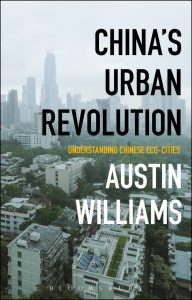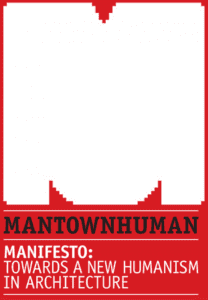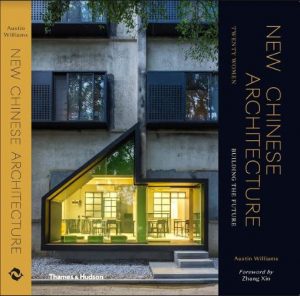The world, one sketch at a time
‘The Art of Urban Sketching: Drawing on Location Around the World’ by Gabriel Campanario; Quarry Books, 2012. 320pp
Reviewed by Anna Gibb | 29 November 2012
A renaissance in sketching is occurring. While advances in technology continue and we now have smartphones that allow us to document our surroundings in an instant, for many people there remains something both seductive and unique about a hand drawing.
The Art of Urban Sketching is concerned with a specific strain of reportage drawing – that which happens outside, in all weathers, and is most definitely not worked up later from a photograph. Author Gabriel Campanario, a journalist and illustrator who was born in Barcelona but now lives in Seattle is the founder of Urban Sketchers. Its mission, he says, is to ‘raise the artistic, storytelling and educational value of location drawing, promoting its practice and connecting people around the world who draw on location where they live and travel.’
I myself am partial to a sketch or two, but prior to reading the book I was unaware of Urban Sketchers, let alone its global reach. Launched in 2008, the website has a core of more than 100 invited ‘correspondents’ from 30 countries around the world – many of whom feature in the book. The accompanying manifesto sets out the desire of urban sketchers to show the world, one drawing at a time. And with many additional contributors through regional flickr and facebook accounts, across the 4 corners of the globe, these sketchers are creating a visual and beautiful record of the world they inhabit.
The book begins with an introduction, with Adebanji Alade, a London based Urban Sketcher, and is followed by a chapter on tools and techniques. Refreshingly, there is no snobbery here. Although there is a ubiquitous penchant for the Moleskine, Campanario stresses that no formal training is required. He encourages people to have a go, whatever their expertise. You are then taken on a pictorial journey from Seattle to Sydney, with many stop-offs in between, including a number of UK cities such as London, Sheffield and Glasgow. Each city introduces its correspondent and shows off some examples of their work to whet your appetite. The book ends with a section intended to inspire the reader, with some suggested themes to tackle from skylines to subways. Such is the nature of the book, there is no need to read it cover to cover. Instead, you can dip into it when you have a spare ten minutes, discovering a new location on each occasion.
There are over 500 sketches to peruse which have been crafted using an abundance of different techniques to produce numerous different styles. The average drawing is recorded as taking 15-20 minutes, although the range shifts from 1 minute through to 10 hours – and then on to an admirably committed 3 days. The correspondents are mostly artists, illustrators and architects who seem to spend much of their spare time sketching.
Although there is a considerable level of variation in terms of the cities, artists and sketch styles, there is a general consensus that what motivates the urban sketchers is a desire to draw en plein air. It is repeatedly emphasised that Urban Sketching is a great way to understand a place – whether you are a long term resident or a newcomer. Even if you think you know everything there is to know about your surroundings, drawing them allows you to look afresh and see things you may have missed before – to find magic in the mundane. Hence, for Walt Taylor, an Urban Sketcher from Virginia, ‘one of the highest functions of urban sketching is to find a locale that, at first glance, is completely devoid of interest, and looking and sketching until you see and feel the beauty of it’
Although the end result is purely visual, the process is about trying to capture the essence and feel of a place; it is a sensory experience involving sounds, smells, and the life happening around you. I spoke to Simone Ridyard, an architect and artist who founded a group of Urban Sketchers within the Manchester School of Art. Ridyard says that urban sketching is about ‘capturing the essence of the view and deciding what is important to convey to the viewer.’ There’s a question in here about the extent to which drawing should be dedicated to representing reality as you see it before you. According to their manifesto, Urban Sketchers ‘are truthful to the scenes we witness.’ Of course, there is much to recommend in developing the skill and taking the patience to portray a scene accurately. But if we come back to Campanario’s goal of raising the artistic value of drawing, is it not acceptable to employ some ‘artistic licence’ in order that the personality of creator shines through?
Campanario outlines how he first began sketching when he moved to Seattle and wanted to understand his new home a little better: ‘it is a new way to deal with the stress of landing in unknown territory.’ This is by no means the only mention in the book of a belief in the therapeutic nature of sketching and of the benefits of switching off and enjoying the meditative power of drawing.
Yet, to what extent is drawing about switching off? When we spoke, Ridyard told of her desire ‘to improve and work quicker.’ Likewise, in my own situation as someone currently undergoing the self-inflicted challenge of producing a drawing every day for a year, my sense is overwhelmingly of the extremely hard work that is required to be able to draw well, and to keep improving. In fact, this comes through in much of this book, although often implicitly rather than explicitly. The enjoyment that results from the act of drawing seems to be found in creating a piece to be proud of, not from a process which is focused on comfort. For example, we are asked to forget about choosing the most convenient place to sit; rather it is the frame of view that will give the best results which is a far more important consideration than mere comfort.
This thoroughly enjoyable book encourages you to ‘stop the clock and let your mind turn off all the noise’. But underlying successful skecthing is a dedicated and structured approach that is evident time and again in the work it showcases. In our world of ‘the instant’ perhaps it might pay to spend some time outside, to turn off the noise and actually look, really look.
—–
Anna Gibb is co-founder of Paper+ Architects. Her work is currently on display at the Royal Scottish Academy Architecture Open Exhibition 2012
Buy this book from Amazon UK






